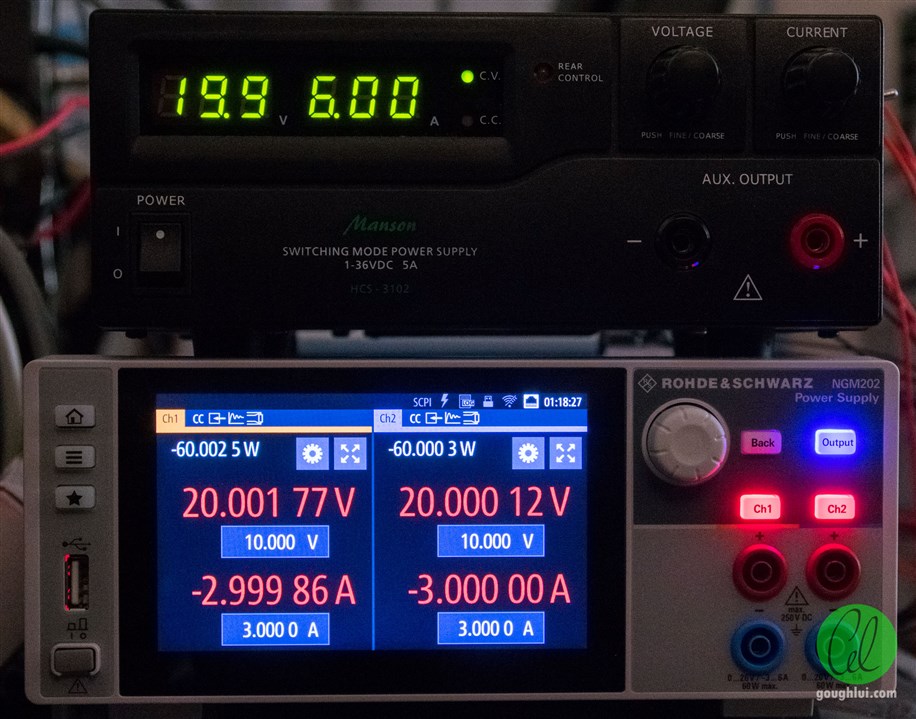Thanks to element14 and Analog Devices/Maxim Integrated for selecting me as one of the ten chosen to receive the MAX40080 Current Sense Amplifier on the Mikroelektronika Click system for the Experimenting with Current Sense Amplifiers Design Challenge. In this first blog, I will detail a little bit about myself, my interest in the Current Sensing Amplifier and my intended test plan.
Apologies that this blog comes right on the deadline – I’ve had a bit of a “late start” thanks to finishing up the marathon that was the Keysight Smart Bench Essentials RoadTest, which itself overlapped with the Experimenting with Thermal Switches Design Challenge. It’s a non-stop marathon here!
Table of Contents
About Me
My name is Dr. Gough Lui and I am an engineer and electronics hobbyist from Sydney, Australia. 
I currently work as a postdoctoral researcher in the Biomedical Engineering space with Western Sydney University and as a research assistant with Civil and Environmental Engineering in the University of New South Wales. I have an interdisciplinary background, which includes an undergraduate degree commencing in Electrical Engineering, finishing in Solar Photovoltaics Engineering with first-class honours and undertaking a Taste-of-Research in Spatial and Surveying Information Systems. I have a PhD in Civil and Environmental Engineering, specifically in Water Research. In my work, I support the design, assembly, testing and deployment of embedded electronics for applications in health, medicine and humanitarian fields.
Outside of work, I run my own personal blog site at https://goughlui.com where I blog about random things including product reviews, repair logs, computing, networking, retro-technology, radio, television, satellite, random observations and going on holidays. I am a licensed foundation-level radio amateur (VK2FGYL).
I have spent much time over the years at element14 as a Top Member, mostly lurking but occasionally responding to a comment here or there. I have benefited greatly from the RoadTest program which has yielded plenty of useful and interesting equipment for my bench. I have contributed a whopping 32 reviews as of this posting and have learned plenty from the experience. I have participated in a few Project 14 builds as well although not so much as of late. This is my second time entering a Design Challenge, having been selected as the Grand Prize winner for the Experimenting with Thermal Switches Design Challenge which preceded this.
My Interest in the Current Sensing Amplifier
I’ve been fortunate enough as of late that I have access to some wonderful pieces of test equipment. The Rohde & Schwarz NGM202 that sits on my bench, for example, has a mode called FastLog which allows 500kS/s of voltage and current readings to be taken on a continuous basis without the need for an oscilloscope. It’s so awesome that I’ve used it before to capture audio from a charging Bluetooth speaker, deduce the rotational speed of a brushless DC fan and to profile the power consumption of microSD cards. Being a two-quadrant supply, it also works well for battery testing where you need to charge and discharge cells repeatedly.

Unfortunately for me, I only have one of these on my bench and sometimes it’s busy working on a long cycle project. It’s a #firstworldproblem, I know, but perhaps I will restate it as such - unfortunately, not everyone has even ONE of these on their bench.
Instead, the humble single-quadrant bench power supply reigns supreme. I received another as part of my recent Keysight Smart Bench Essentials RoadTest and while its metering is excellent in terms of accuracy, it really only tops out at about 5Hz if we’re reading voltage and current. So, I wondered, wouldn’t something like the MAX40080 be a great match to upgrade a simple test instrument with capabilities usually found in higher end performance supplies or SMUs? After all, the MAX40080 makes a number of claims with regards to its wide common-mode input range spanning from -0.1 to 36V which neatly covers the range most DC power supplies operate at, and it offers 12-bits of resolution which is 4,096 steps, which for a 1A range means a resolution of approximately 0.24mA which is neither excellent nor terrible for a general-purpose application. Best of all, it is capable of sample rates into the kilosamples per second, accounting for I2C bus-speed limitations.
Now, I know that dedicated “lower cost” devices, such as the Nordic Semiconductor Power Profiler Kit 2 and various microcontroller development boards have ways of measuring power consumption for power profiling purposes, however, these often are limited in both their current handling and voltage handling capabilities. They may not, for example, be able to handle the current draw of a mobile phone or hefty USB device on quick-charge voltages. Some of these are also not inexpensive – whereas the Current Click 6 board can be had for about AU$32, making it quite attractive.
My Test Plan
With this in mind, I intend to spend my eight weeks (or whatever I have left of it) trying to answer the following questions:
- What does it take to get it up and running?
- How accurate is it at measuring voltages and currents in a “static” scenario, using signals generated from a Keithley 2450 SMU? How linear is it? What about gain/offset errors in both positive and negative directions?
- What are the most optimal configuration parameters for a general-purpose data acquisition application – how far can we push that I2C bus and will averaging work in our favour?
- Can we perform simple current profiling experiments – for example, recovering audio from a charging Bluetooth speaker again?
- Finally, can I develop a simple client that is “SCPI-compatible” in some way to stream results from such a solution over the network to allow for integration with existing test equipment?
Conclusion
I hope this posting has given you an insight into me, my interest in applying the current sense amplifier IC to upgrade relatively basic test equipment and the manner in which I propose to develop with them and test them. I will be learning as I go along, so things may not go as smoothly as I may hope, but I’ll also be reviewing the equipment and showing some of the configuration necessary in upcoming blogs. I am hopeful this exercise will not only teach me about applying and designing with this very integrated digital current sense amplifier, but also yield a practical and useful tool for laboratories which may be less fortunate with regards to having access to high-end equipment.
---
This is part of the Experimenting with Current Sense Amplifiers Design Challenge – A Current-Sensing PSU Upgrade Blog Series:
- Blog #1: A Current-Sensing PSU Upgrade - Introduction
- Blog #2: A Current-Sensing PSU Upgrade - Unboxing
- Blog #3: A Current-Sensing PSU Upgrade – Setting Up
- Blog #4: A Current-Sensing PSU Upgrade – Accuracy & Noise Performance
- Blog #5: A Current-Sensing PSU Upgrade – Arduino Gets Involved, Ground to Raspberry Pi … Alien Signal Identified!
- Blog #6: A Current-Sensing PSU Upgrade – PSU Logging, CSA & FastLog Comparison, a Sound Check & an Overall Summary

-

Andrew J
-
Cancel
-
Vote Up
0
Vote Down
-
-
Sign in to reply
-
More
-
Cancel
-

Gough Lui
in reply to Andrew J
-
Cancel
-
Vote Up
0
Vote Down
-
-
Sign in to reply
-
More
-
Cancel
Comment-

Gough Lui
in reply to Andrew J
-
Cancel
-
Vote Up
0
Vote Down
-
-
Sign in to reply
-
More
-
Cancel
Children